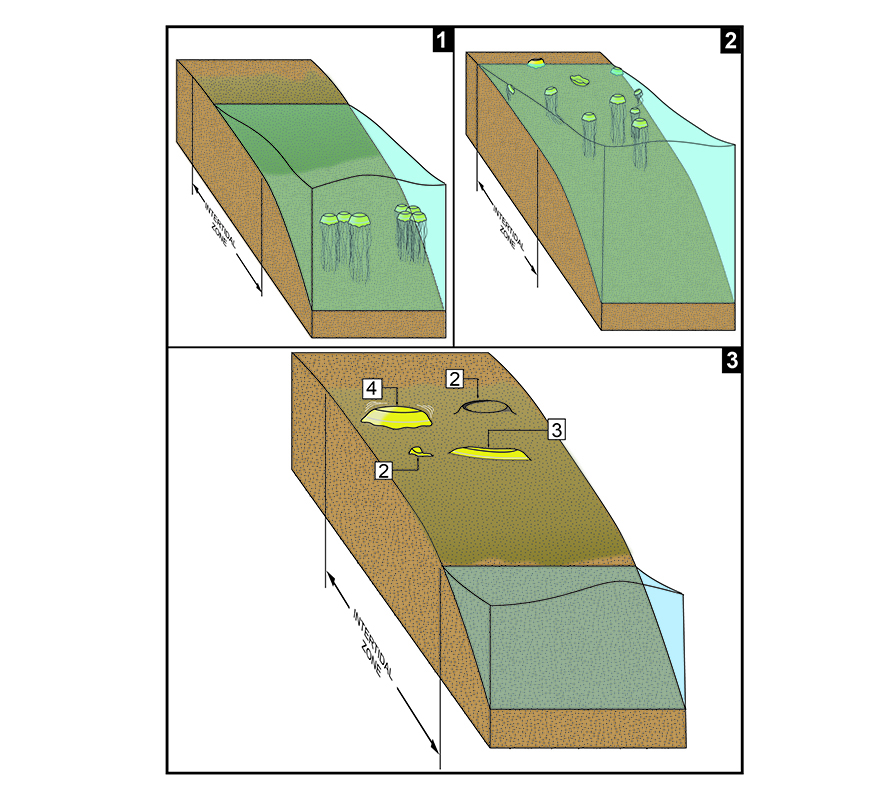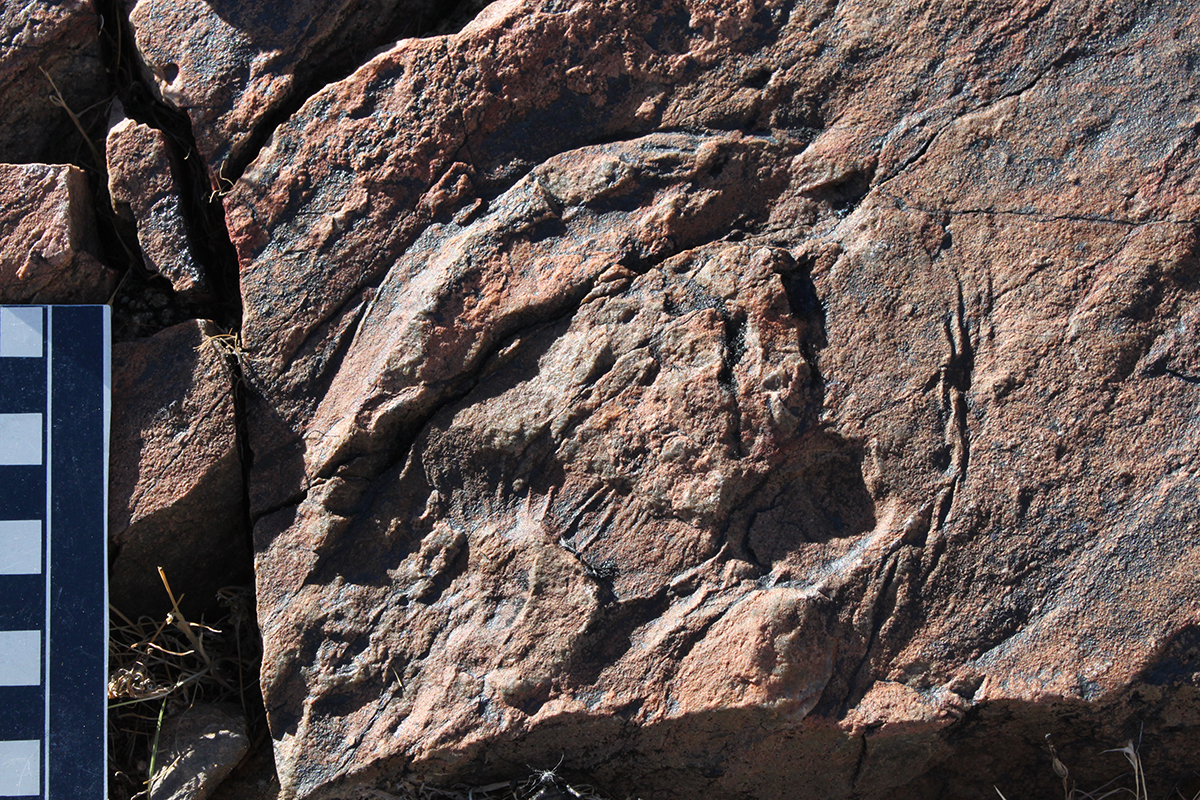Desert Fossils Reveal 540-Million-Year-Old Jellyfish 'Graveyard'
But 540 million years ago, seaside sand contained densely packed microbial communities, which created a gooey glue that was excellent for preserving impressions of ocean creatures left high and dry by retreating waves.
And on a long-gone seashore in what is now arid Death Valley, sticky sand retained impressions of the oldest known example of a jellyfish stranding, saving a fossilized snapshot of Cambrian period marine life that researchers excavated and described in a new study. [Cambrian Creatures Gallery: Photos of Primitive Sea Life]
The ancient jellyfish were preserved in a slab of sandstone found in southeastern California. Scientists identified 13 of these oval specimens on the rocky surface, ranging from 1.2 to 8.3 inches (3 to 21 centimeters) in diameter. The fossils were lighter than the rock surrounding them, and they varied not only in size but also their style of preservation. Some included convex, circular ridges; others held concave rings around a convex interior; and several were fossilized as more pronounced, rounded mounds, the scientists wrote in the study.
In one jellyfish specimen, shapes of some of the animal's body parts were still faintly visible. Additional marks in the rock around the fossilized jellyfish hinted at the movements of ancient currents, which may have pushed and distorted the bodies of the stranded jellyfish prior to fossilization. Other marks might have been made by a stranded jellyfish's attempts to move back into the water, according to the study authors.
Unique conditions for fossil formation
Ancient, soft-bodied animals are exceedingly rare in the fossil record, compared with animals with robust skeletons or shells, the study authors wrote. But a unique combination of environmental conditions can preserve even jellyfish in surprising detail, study lead author and geologist Aaron Sappenfield told Live Science.

Jellyfish that wash up on beaches today are frequently eaten by scavenging birds and crustaceans, Sappenfield said. But during the Cambrian period, when marine life was bountiful and diverse, there were no large terrestrial scavengers to pick at the jellies' carcasses. If they became stranded, chances were good that their remains would stay in one place long enough to fossilize, he said.
However, the jellies' preservation was equally dependent on the gummy, microbe-rich sand that they stranded themselves on, which was also a characteristic of the Cambrian period, Sappenfield said.
Sign up for the Live Science daily newsletter now
Get the world’s most fascinating discoveries delivered straight to your inbox.
"A jellyfish lands on the beach — that big, wet sack settles in the sand — and you get this nice impression with really high resolution because of that binding agent," he said.

Most of the known fossils of mass jellyfish strandings date to the Cambrian, likely because that period presented these unique conditions — few scavengers, and sticky sand — that enabled fossilization in an organism that was very difficult to preserve, Sappenfield told Live Science.
Solving an ancient puzzle
Early Cambrian fossils such as these are also helping paleontologists investigate a long-standing mystery about a group of bizarre marine organisms known collectively as the Ediacaran biota, which appeared around 575 million years ago and abruptly disappeared from the fossil record around the beginning of the Cambrian period, about 540 million years ago, Sappenfield said.
"Trying to compare types of fossils preserved on either side of the boundary is a very important step, to say if they vanished because preservation conditions didn't favor them, or because of another reason, such as a mass extinction," he explained.

These "boundary" fossils could offer clues about what factors may have led to dramatic shifts like those that occurred for the Ediacaran biota. And with that information, scientists could better understand how ecosystems today may be affected by changing conditions, such as those driven by human activity, Sappenfield said.
"Minor perturbances to ecology and how global ecosystems behave can manifest in very significant changes in the way the biosphere [places on Earth that harbor life] is structured," he said.
The findings were published online in the July 2017 issue of the journal Geological Magazine.
Original article on Live Science.

Mindy Weisberger is an editor at Scholastic and a former Live Science channel editor and senior writer. She has reported on general science, covering climate change, paleontology, biology and space. Mindy studied film at Columbia University; prior to Live Science she produced, wrote and directed media for the American Museum of Natural History in New York City. Her videos about dinosaurs, astrophysics, biodiversity and evolution appear in museums and science centers worldwide, earning awards such as the CINE Golden Eagle and the Communicator Award of Excellence. Her writing has also appeared in Scientific American, The Washington Post and How It Works Magazine. Her book "Rise of the Zombie Bugs: The Surprising Science of Parasitic Mind Control" will be published in spring 2025 by Johns Hopkins University Press.









